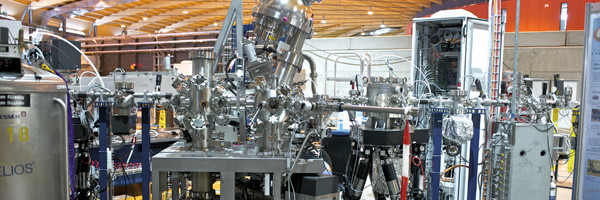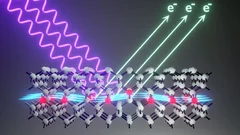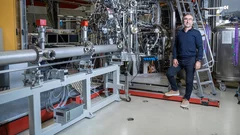
Spectroscopy of Quantum Materials Group
The Spectroscopy of Quantum Materials group uses advanced spectroscopic techniques to study electronic structure, low-energy excitations and correlation effects in a broad range of complex material systems exhibiting surprising and useful properties. These include high-temperature superconductors, low-dimensional magnets, colossal magnetoresistors, topological insulators, oxide thin films, interfaces between oxide materials, and oxide heterostructures. We operate two beamlines with two endstations each.
The SIS beamline offers low-temperature high-resolution angle-resolved photoemission spectroscopy (ARPES) and spin-resolved ARPES with photon energies in the VUV to soft X-ray regime (10-800 eV). The ADRESS beamline operates in the soft X-ray range (300-1600 eV) and hosts resonant inelastic x-ray scattering (RIXS) and soft x-ray ARPES endstations. Additionally, part of our research makes use of a dedicated pulsed laser deposition (PLD) chamber for in situ studies of thin films, interfaces, and heterostructures. Collectively, these techniques give us the ability to probe surface and bulk properties of complex materials and to visualize the interplay of the electrons with spin, lattice, and orbital degrees of freedom.
News
Unveiling ultra-thin electron liquids in silicon
Soft X-rays enable scientists to visualise non-invasively the electronic properties of ultra-thin dopant layers buried within semiconductor wafers.
New materials for the computer of the future
Researchers are identifying and studying material compounds whose unique properties could lead to the development of novel types of chip.
Spin keeps electrons in line in iron-based superconductor
Electronic nematicity, thought to be an ingredient in high temperature superconductivity, is primarily spin driven in FeSe finds a study in Nature Physics.


